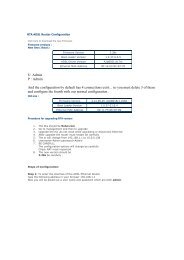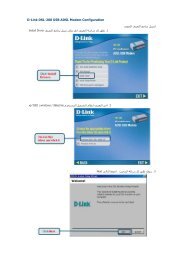Concealed Intentions- JLAC-.pdf
Concealed Intentions- JLAC-.pdf
Concealed Intentions- JLAC-.pdf
Create successful ePaper yourself
Turn your PDF publications into a flip-book with our unique Google optimized e-Paper software.
oundaries, and how it sees the existence of agricultural buildings as of lesser importance in terms of inclusion<br />
within the boundaries. Moreover, since the area between the two neighborhoods belongs to residents of Yata, had<br />
the committee taken the effort of acquiring this basic information, the land reserves for the neighborhood of Deirat<br />
actually lie to the south of the road, so that it would have been justified to apply an exception to the prohibition of<br />
construction along Road 3269. As for the area between the two neighborhoods, given the absence of any consultation<br />
with the residents of the village and the lack of familiarity with the needs of the population, including the failure to<br />
detail areas for public needs, it is unclear how the planning authorities can claim to be taking on the role of defending<br />
land resources. This claim is paternalistic, given the absence of any cooperation and/or support for this position on the<br />
part of the local population. It is unacceptable that, on the one hand, the plan is minimalistic in intervening to meet<br />
the needs of the population, yet when it comes to areas outside the plan it suddenly switches to over-intervention in<br />
the name of the population it does not represent, and whose needs it does not recognize.<br />
Since the approval of the plan, the residents of the village have constructed 10 more buildings outside the plan<br />
boundaries, most of which have received final demolition orders. These buildings include nine residential homes<br />
and the new school building mentioned above, situated between the two neighborhoods. The threat of demolition<br />
prevents development and construction by the residents.<br />
Public areas: According to the minutes of the Subcommittee for Objections, the planners calculated the capacity of<br />
the plan after deducting 30 percent of the plan area. In item 28, the committee determines that there are two empty<br />
plots that may be used for public needs, with a size of 20 and 8 dunams, respectively. In practice, however, these are<br />
the only two vacant plots within the plan area. Moreover, according to the plan itself, the plots are not empty, but<br />
include two planned roads. The Civil Administration’s proposal is unreasonable. The larger of the two plots is owned<br />
by a man who has 7 children, and the plot is intended for their future homes. The smaller plot is privately owned<br />
by residents of Yata and used for agriculture. Accordingly, it is impossible to determine in an arbitrary manner that<br />
private land is to be used for public purposes, particularly since the residents of the village have public areas that were<br />
deliberately left outside the boundary plans, such as the two schools and the planned cemetery. This in addition to<br />
the existing public areas – the clinic and two mosques. Only by calculating all these areas is it possible to reach a figure<br />
of 30 percent public areas.<br />
Preventing development: As noted above, the villagers have development relating to both infrastructures and public<br />
services, in addition to development for residential needs. The committee’s claims are inconsistent with the residents’<br />
desires, completely ignore these, and case damage to the development of the village. Since the plan was approved,<br />
some five residential buildings have been demolished by the Civil Administration, one of which had been in existence<br />
for 20 years and another for 12 years. According to the villagers’ plan, each neighborhood has desirable directions of<br />
development on the basis of the land ownership patterns. Thus, in Ar-Rif’iya, the desirable directions of development<br />
are to the south and west of the road, and in Deirat – to the north and east of the plan area. The villagers wish to<br />
construct a cemetery and school between the two areas.<br />
Negative migration: Due to the shortage of housing, there is negative migration of villagers to Areas A and B in<br />
Hebron and Yata. This situation is the direct result of the planning failure of the Civil Administration in Area C in<br />
general, and in Deirat – Ar-Rif’iya in particular.<br />
Our demand is to update the plan boundaries in the following manner:<br />
On the basis of the above, it is clear that the basic data used by the Civil Administration in planning the village of Deirat<br />
– Ar-Rif’iya are incorrect and/or incomplete; the guiding considerations failed to address the social, demographic,<br />
property, and cultural profile of the residents of the village; as a result, the decisions were arbitrary, injurious, and<br />
have no connection with the development of the village., The result is a plan that failed to meet minimum standards<br />
for proper planning from the day it was prepared, and all the more so today. Accordingly, the plan must be changed<br />
and its boundaries extended on the basis of the above details in order to meet the residents’ needs and address the<br />
planning problems created by the special plan, as detailed above.<br />
To this end, we reiterate our alternative demands to transfer the planning authorities to the representatives of the local<br />
Palestinian population in Area C, whether by way of the implementation of the Oslo Agreement or by the nullification<br />
of Order 418 (with the necessary changes), insofar as this relates to the reinstatement of the authorities of the district<br />
committees and village councils as described above. Pending the above-mentioned changes, or alternatively, we<br />
56





